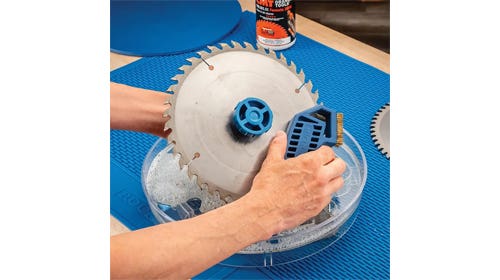Wendell Castle, mentor and innovator, dies
Wendell Castle, referred to as the father of the art furniture movement, died Jan. 20 at his home in Scottsville, N.Y. He was 85.
Wendell Castle, referred to as the father of the art furniture movement, died Jan. 20 at his home in Scottsville, N.Y. He was 85.
Castle is recognized for inventing a completely new way of designing and constructing furniture.
A native of Emporia, Kan., Castle was an Artist in Residence at Rochester Institute of Technology. His connections with Rochester, N.Y., and RIT ran deep. Harold Brennan, the director of what was then the School for American Craftsmen, recruited him to join the RIT faculty in 1962 to teach woodworking and furniture design. Castle maintained a studio in downtown Rochester, which was within walking distance of RIT’s former city campus during the 1960s.
Until recently, Castle had regularly taught a graduate industrial design seminar, which enabled RIT students to interact with the artist in an intimate setting. He had a tradition of inviting students into his studio to learn about the inner workings of his unique practice.
“Wendell gifted us with his enthusiasm, his eagerness to collaborate and share, and his generosity to deliver his intentions with tangible and always elegant results,” said Josh Owen, professor and chair of RIT’s industrial design program.
By 1965, Castle’s work and influence positioned him at the forefront of the growing Craft Furniture Movement sweeping the nation. His designs were organic, bold and at times whimsical. Crafted from hardwoods, plastics, concrete and metals, he used multiple disciplines that included stack lamination, hand carving techniques, casting forms in bronze, and milling with a 6-axis CNC machine. He moved to Scottsville in the 1970s.
Scott Grove became Castle’s studio director in 2008, and still can’t believe his good fortune.
“He and his team continued to evolve and explore new aesthetic themes and methods right before my eyes and added a carving robot to his collection of amazing tools. I have since moved on but I’m grateful for the time I spent working with him. He touched many lives and his work will continue to influence many artists and craftsmen alike,” says Grove.
“Wendell is considered the father of the art furniture movement; he was also like a father to me in my own career. He validated my artistic path and shared many methods, processes and approaches to design with me. He inspired me and encouraged me, and I will miss him.”
Silas Kopf also worked for Castle, beginning in 1974.
“One morning Wendell came into the shop and eyed the stack-laminated maple dining table that was fairly far along in the carving process. I imagine that at least two weeks had been put into it,” Kopf recalls.
“Wendell silently walked around it several times, put his hand on his chin and stared at the piece. He then picked up a chainsaw, cut off the bottom 18” and started the laminating over again. I was horrified. The table had looked fine to me but obviously something didn’t sit right with Wendell. The clear lesson was to never compromise the integrity of your artistic vision.”
Bebe Pritam Johnson, owner of Pritam & Eames Gallery, reflects on a friend she will miss.
“Wendell brought the attitude of a sculptor to furniture and we welcomed exposing this aspect of furniture making. We will not forget his early support of Pritam & Eames. In future years our paths would occasionally cross, and I would enjoy a conversation and drink with this shy, soft-spoken man from Kansas. He always said something unexpected, something remarkable. I will miss those conversations,” says Johnson.
Garry Knox Bennett, a furniture maker in Oakland, Calif., knew Castle well. They visited each other’s studios over the years, collaborated on projects and shared many conversations.
“Wendell and I were very good friends. One of the things I noticed was people thought he was aloof, but he wasn’t. He was shy in a social situation and that’s surprising for a person of that stature. But in a business situation he was very up and ready to go,” says Bennett.
This article originally appeared in the March 2018 issue.







